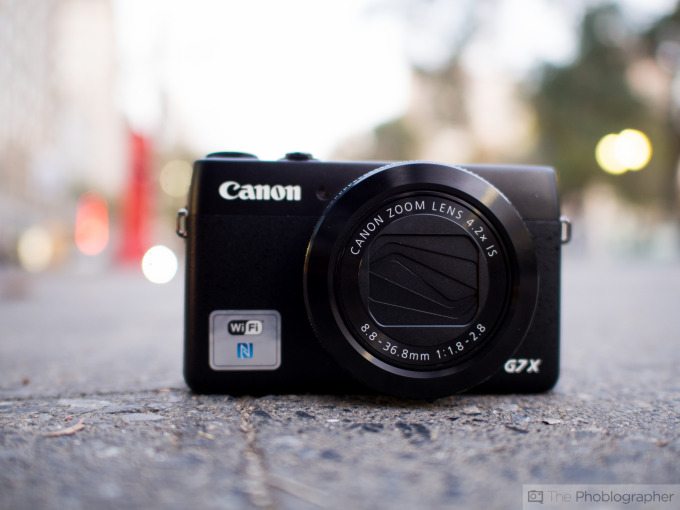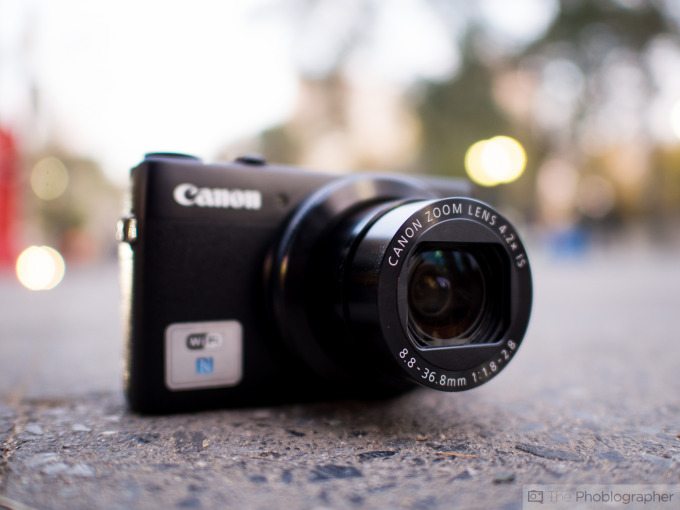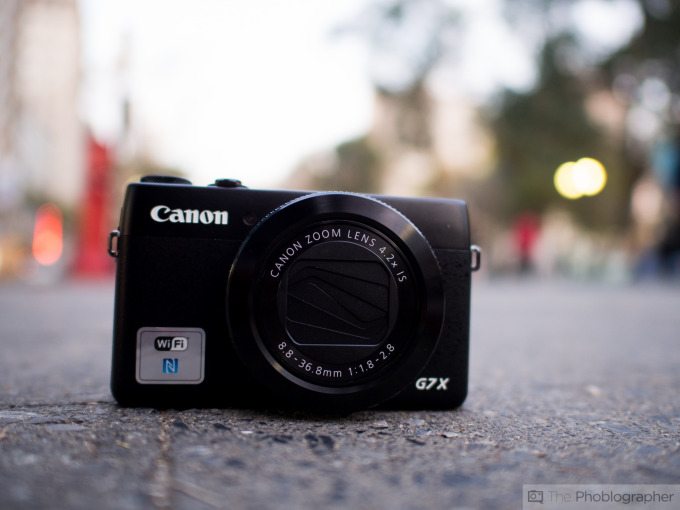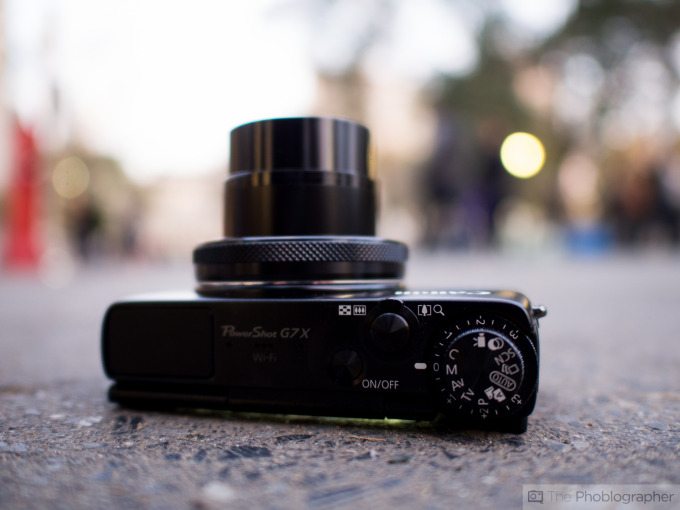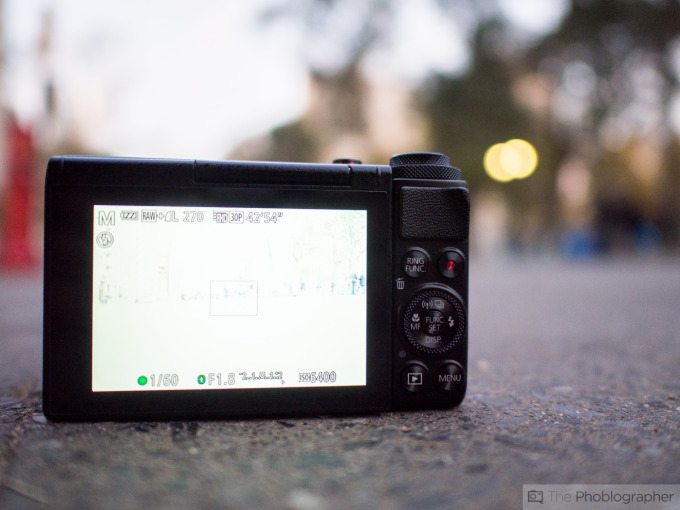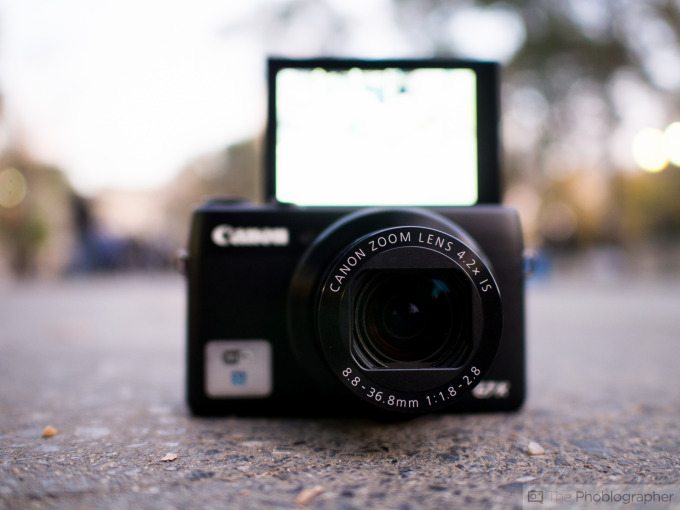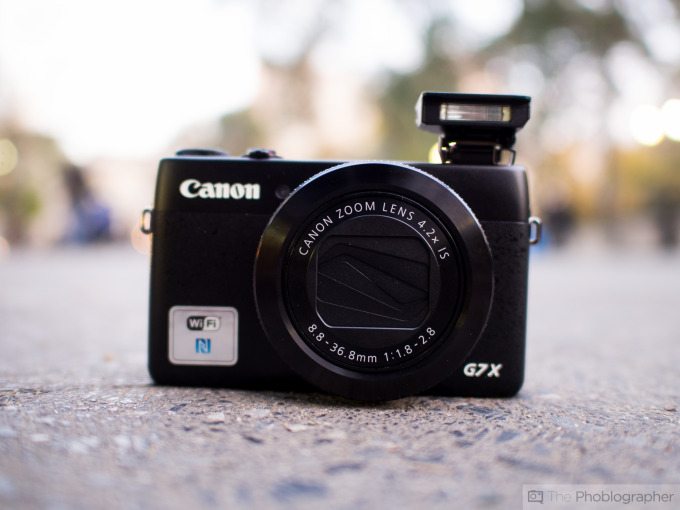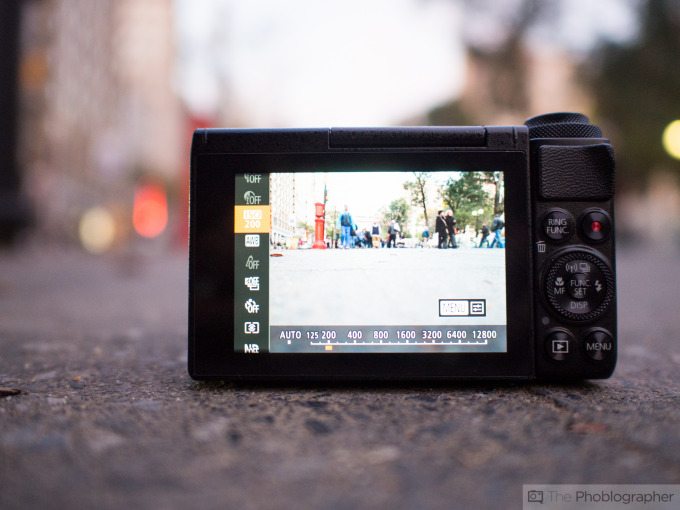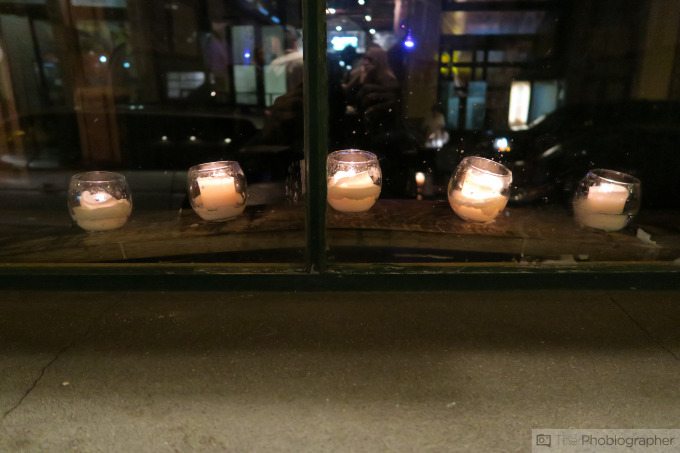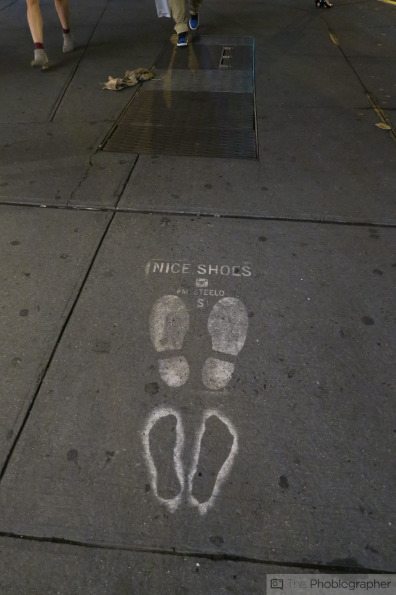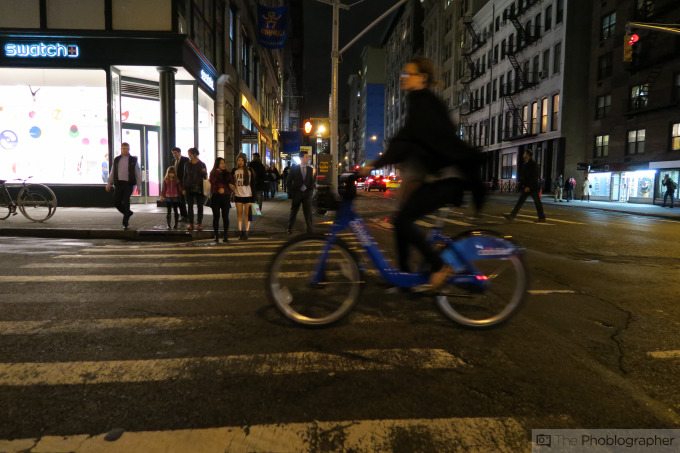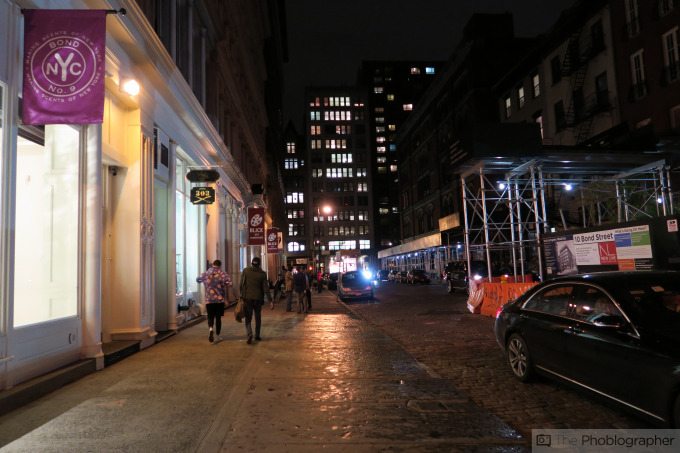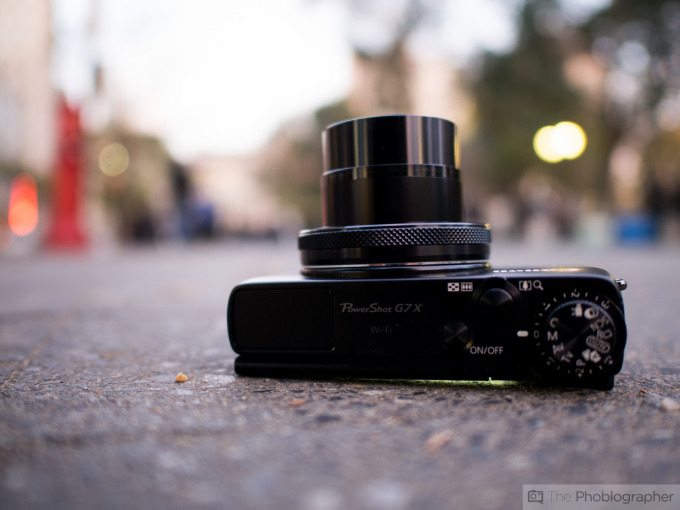The Canon G7x is a bit of an odd duck–while the company for many years has chosen to carve their own path for their products, the G7X is billed as being the little sibling to the G1X Mk II. But at the same time, it comes off as a nod to Sony’s RX100 series of cameras. In fact, it even uses a 1 inch sensor–though the company does not state where they got it from. But there are also characteristics of the camera that hold true and are in line with the S series that they created many years ago. For starters, there’s a giant control ring around the lens that clicks and that has always been looked at as a successful addition.
And while this sensor, a fair zoom lens, WiFi and a touchscreen all make up what the camera is, it also feels like Canon purposely tried to cripple the G7x.
Pros and Cons
Pros
– Great feeling in the hand
– Very compact and fits into a skinny jean pockets
– Nice controls, but we really wish that there were three dials instead of two for exposures
– WiFi setup and transferring is very simple
– Incredible battery life
– Fast focusing
– An excellent JPEG camera to be used with WiFi transferring
Cons
– LCD screen doesn’t tilt downward, only upward.
– Images don’t seem as sharp as what Sony’s 1 inch sensors can output
Tech Specs
Specs taken from the B&H Photo listing of the product
- 20.2MP 1″ High-Sensitivity CMOS Sensor
- DIGIC 6 Image Processor
- 4.2x Optical Zoom f/1.8-2.8 IS Lens
- 24-100mm (35mm Equivalent)
- 3.0″ 1,040k-Dot Tilting Touchscreen LCD
- High-Speed AF with 31 Focus Points
- Full HD Video Recording at 60p
- ISO 12,800 & 6.5 fps Continuous Shooting
- Control Ring, Dials & Built-In ND Filter
- Built-In Wi-Fi Connectivity with NFC
Gear Used
We tested the Canon G7x more or less by itself. If anything, we connected it to the Google Nexus 5 for WiFi transferring.
Ergonomics
The Canon G7x is a camera with an interesting lineage and ergonomic structure. While the G7x is under the company’s G series of cameras, it doesn’t have many of the traditional corners, dials and extras that the G series has been known for. The Canon G series has for many years been targeted at the high end enthusiast and the pro. In fact, many years ago Canon actually released content campaigns working with photojournalists who used the G series for their work.
All of that aside though, the G7x ergonomically more resembles an S series camera. And we start with the giant lens in the middle of the front. The front of the G7x is otherwise devoid of controls and very minimalistic.
Circle around to the top and what you’ll find are a control dial around the lens, on/off switch, exposure compensation dial, mode dial, and zoom rocker. If you feel like you need to use a flash, you’re going to need to use the camera’s pop-up flash. Most G series compacts have a hot shoe–but the G7X doesn’t.
The back of the camera is mostly dominated by the giant touch capable LCD screen. While you have the option of controlling most of the camera via this screen, you can also use the dials and buttons on the side. Canon incorporated four way controls, an exposure dial, ring function control button, menu, one touch WiFi uploading, video control and more to the back of the G7x.
The screen tilts upward. It was designed to help the user take a selfie of their beautiful face. Sadly though, the screen doesn’t tilt downward for overhead photos at concerts and when trying to shoot downward. Instead, you’ll need to tilt the screen up in the way that you see turn the camera towards you.
In terms of design for this one, it’s a big fail.
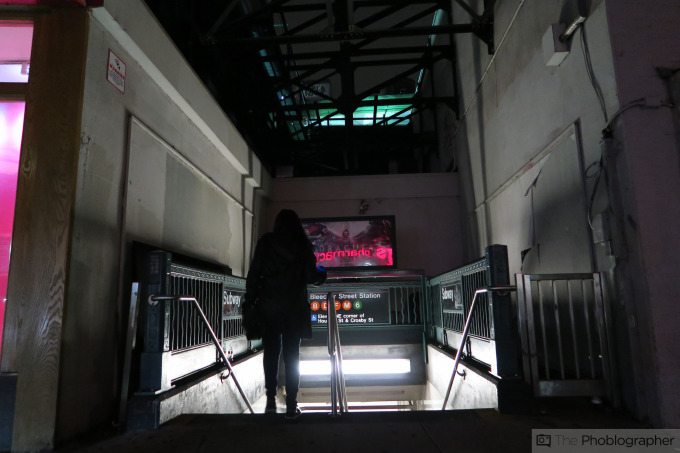
Build Quality
To say that the G7X feels great in the hands is an understatement. When coupled with a nice wrist strap, you’ll never want it to leave your hands. Despite the fact that the camera has a small body, all of the controls that you need to reach are simple enough to work with that you’ll never really have a problem when capturing candids in the streets. The only problem that we had occasionally had to do with accidentally pressing something on the touch screen. But that’s easily disabled.
We wish that there were also another control dial for exposure–as it is the camera has two: one around the lens with the other on the back. These added controls would make working with the camera in manual mode much simpler.
However, we don’t expect everyone to shoot with it in manual mode. In fact, you may want to just leave it in aperture priority and forget about all the rest.
Ease of Use
The really nice thing about Canon’s Powershot lineup of cameras is that their menu system hasn’t changed much over the years. And to be honest it doesn’t need to. Everything that you need is right where you can access it and working with the camera’s settings are every bit as simple as they were many years ago. In fact, to this date we believe that the Canon menu system for point and shoots is the simplest that we’ve ever used.
Kudos to Canon for not touching something that worked damn near perfectly for years and years.
Autofocus
The Canon G7x has a 1 inch sensor at the heart and focuses extremely quickly. We’d like to equate it to the speed of some Micro Four Thirds cameras to be honest. We found our best results to come when we used the center focusing point. When using others, then the best results came when we used the touch screen to select an area and shoot.
If you want to manually focus, you’re going to have the weirdest experience ever. You’ll need to switch the camera to MF mode then use the back dial to choose the focusing range. It’s odd, but ergonomically makes a lot of sense since you’ll be looking at the screen to begin with.
Maybe we’re just a couple of photographers way too caught up in the dark art of the ILC camera.
Metering
During our tests, we found the metering of the Canon G7x to mostly be in line with many digital cameras of this type. According to a Sunny 16 test, the camera wants you to slightly underexpose. This is very typical of many sensors today on the market.
When we set the camera to aperture priority we didn’t have very much of an issue. This problem only really comes out during manual use–and considering the way that digital sensors work we wouldn’t really call it a problem at this point.
Image Quality

Canon’s G7x can deliver beautiful images in good lighting. But above ISO 800, the 1 inch sensor seems to deliver images that fall apart very quickly. The solution to this problem is with the camera’s black and white settings (in JPEG) or simply uploading to the web. The G7x isn’t a camera that you’re going to want to pixel peep with, so don’t really bother. It’s more about creating images and capturing moments. If that what you’re after, then you won’t have any major qualms with its output. But otherwise, you’ll spend hours crying and complaining until you curl up into a ball rocking back and forth in your closet like some of the saddest human beings.
High ISO Output

As we stated above, don’t expect anything too ground breaking from the G7x. In terms of modern camera technology, the sensor is medium to small at best and the processor in it doesn’t seem to be doing a whole lot to help with the results. At least that’s what we found when working with the JPEGs
RAW File Versatility
At the time of publishing this post, Adobe Lightroom 5 does not support the G7x’s raw files. We will update this post when the files are supported. However, we don’t think that most folks will be shooting with this camera in RAW anyway.
Extra Image Samples
Conclusions
Likes
– Small, portable size
– You’ll want to carry this camera with you everywhere you can.
– Nice control rings
– WiFi transferrng is very simple
Dislikes
– Needs more control dials
– Doesn’t feel like a G series camera
– We wish Canon took the sensor from the G1X Mk II and put it in this camera.
– Too expensive
The Canon G7x is a really nice camera for the person that just wants to shoot and not worry about any of the exposure settings. Indeed, we’d recommend it for many amateurs. But for anyone else above that, we think that this camera is lacking a lot of what the G series usually delivers to consumers–and much of it comes in the ergonomic controls. Again though, we state this by thinking about the higher end consumer and more experienced photographer.
We award the Canon G7x three stars out of five. B&H Photo lists the camera for $699.99.
Recommended Accessories
TAP and DYE Wrist straps: this company has some of the best wrist straps available that are both stylish and functional. Many of our staff use them and they are designed to take a heck of a beating and look better with age.


